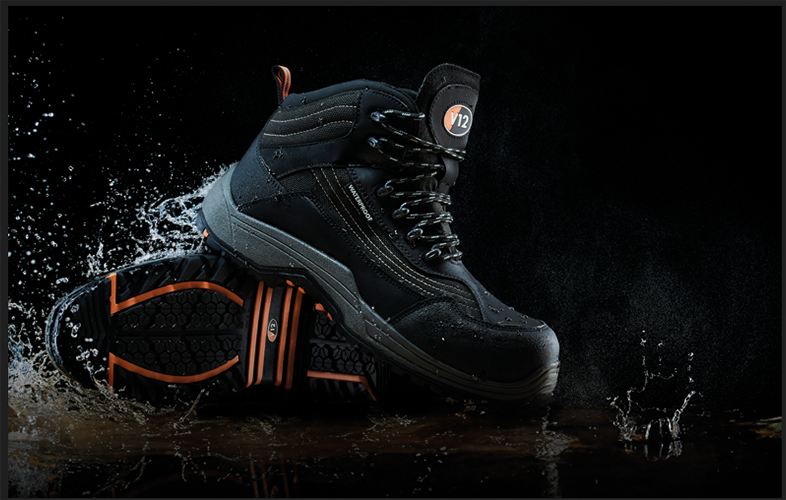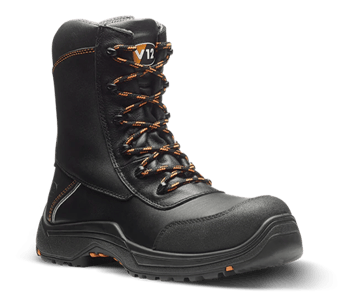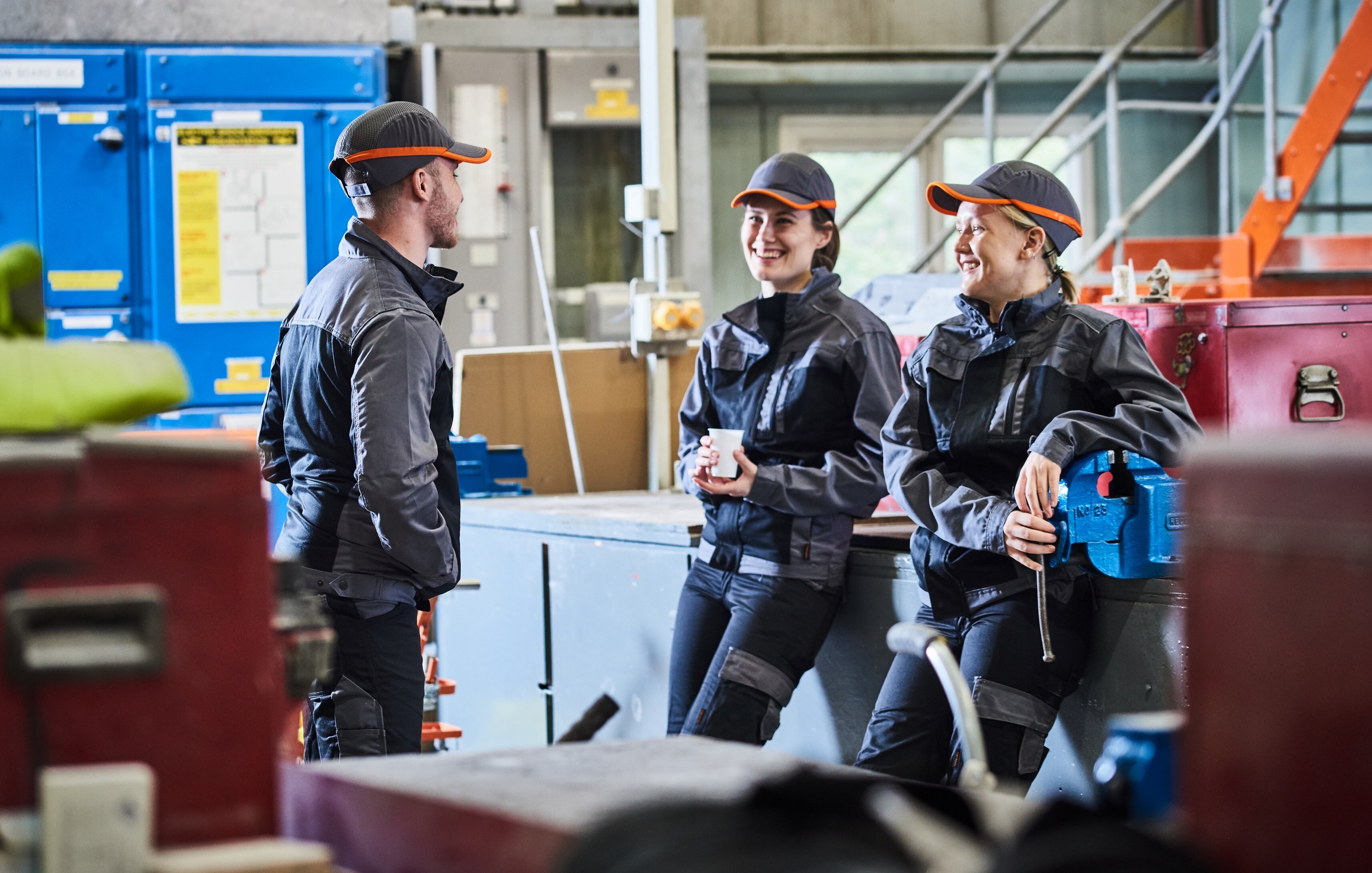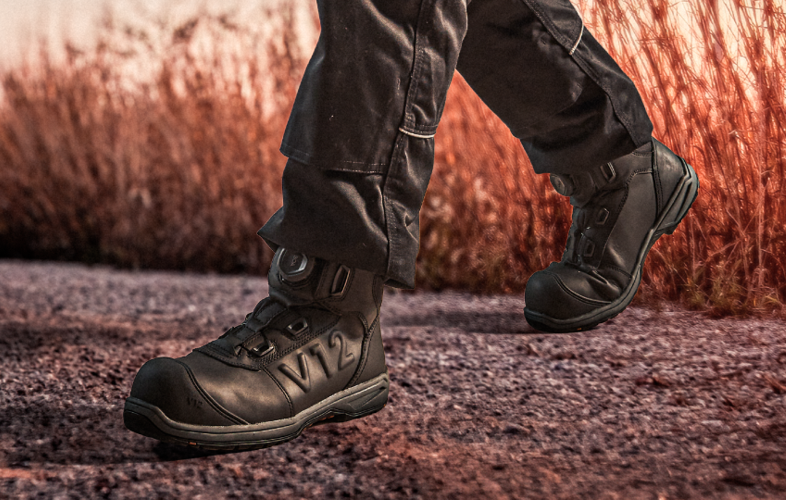When it comes to keeping feet in safety boots dry, there are multiple designs, materials and componentry which can offer different levels of protection.
Some working environments will call for fully waterproof safety footwear, while others will require a safety boot with a certain level of water resistance. In this blog, we’ll explore the ways a boot can be developed to protect feet from water exposure, and which kind of applications these particular designs may be suitable for.
Firstly, let’s remind ourselves of two important definitions:
Water-resistant safety bootS
The boot’s upper will resist the penetration of water to a certain degree, but not entirely. Prolonged exposure to water will mean that wet feet will occur eventually.
Waterproof safety bootS
The boot is impervious to water, because there is a waterproof membrane sitting behind the upper, so no water can get into the boot past this barrier of material.
Let’s first look at the various ways a boot can be water-resistant.
1. Water-resistance through the uppeR
Most safety boot uppers are made from leather (which is animal skin - usually bovine and buffalo) and because skin – just like ours – has a natural water resistance, then a pair of leather boots will repel light or infrequent water such as rain or sporadic splashes without any extra help.
Treatment of leather
If the manufacturer uses the whole thickness of the leather, known as the full grain, it will mean the boot’s upper will offer strong water-resistance. This is because the leather is the premium cut, not split or sanded down, so it stays durable and strong.
If, however, a manufacturer wants to make the leather go further, they can split the material horizontally into layers, which then become known as ‘corrected grain.’ So, if a boot’s upper is made of corrected grain, it is thinner, so it’s less tough - and less water-resistant.
Want to find out more about the types of leather used in safety boots? Read all about it in this article.
2. Added water resistance with a bellows tongue
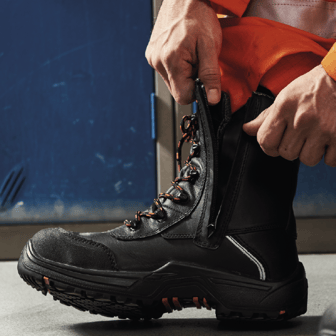 A bellows tongue gives additional protection to the wearer from water getting into the footwear through the gap between the boot's tongue and the sides of the upper.
A bellows tongue gives additional protection to the wearer from water getting into the footwear through the gap between the boot's tongue and the sides of the upper.
Afterall, a safety boot might have a waterproof membrane inside to stop water penetrating, but if the wearer is working in a trench or in deep puddles, the water could very easily go in and over through this gap and cause uncomfortably wet feet.
A bellows tongue is attached to each side of the upper, so when the tongue is brought forward and out (or unfolded - like a bellows), this gap present in many items of footwear is closed, and water continues to be resisted.
A full bellows tongue
A full bellows tongue goes a step further by going right to the top of the boot. This is a particularly important feature to have with hi-leg safety boots, because the gap between the upper and the tongue can be significant due to the height of these types of boot.
A bellows tongue gives extra protection to wearers working in roles where there are significant amounts of water, or in an environment where water flicks or sprays up and into the higher part of the boot.
3. Downward-facing seams
This upper feature is clever additional method for a boot to gain water repellence. Because the seams face downward rather than up where moisture can collect and sit, when water comes into contact with the boot, it is dispersed down and away from the upper material, giving increased water resistance.
The E1300.01 Defiant IGS (pictured) was a result of two years of development with input from leading Oil and Gas companies, so it is crammed full of protection from water ingress.
Its full grain leather, bellows tongue and down-facing seams means it's highly effective in resisting water so common to that industry.
4. Whole piece of footwear
 An item of footwear with this construction features an upper which is cut from one piece of material. This design feature means that the footwear has less stitching, which in turn means there are less places for water to find its way in, again aiding dry feet when exposed to wet conditions.
An item of footwear with this construction features an upper which is cut from one piece of material. This design feature means that the footwear has less stitching, which in turn means there are less places for water to find its way in, again aiding dry feet when exposed to wet conditions.
Water-resistance is assured with the V1710 Challenger IGS (pictured), as its upper is constructed with a whole-cut piece of leather along with reinforced stitching, which reduces liquids entering the boot.
5. Waterproof membrane
While the above features are all ways of repelling water to a certain extent, the only way to guarantee dry feet is with a boot featuring a specific waterproof membrane. This barrier beneath the upper will keep out high levels of long-term water exposure.
Preserving the water-repellence of boots
There are several products including oils, waxes and sprays available to strengthen or sustain leather's resistance to water. Other effective leather protection products such as Leatherfood will rejuvenate the material, thereby helping to preserve a boot's water-resistant properties.
Finally, cleaning and storing safety boots is key in maintaining their water-resistant properties, as this adds greater life to the boots because it preserves the upper’s suppleness, strength and reduces the chances of cracking. Find out more about boot care and footwear preservation in our blog here.
HAVE YOU SEEN THE V12 BOOT FINDER?
So, if you’re a safety footwear distributor, and you now know the different ways in which a safety boot can resist or stop water, what’s your next step? The V12 Boot Finder. The is your online tool to get you the right safety footwear. Simply click below, add in the details of your safety requirements, and you'll get our instant and expert safety boot recommendations.
Not currently selling V12 Footwear? Click here and start talking to us about becoming a distributor.

